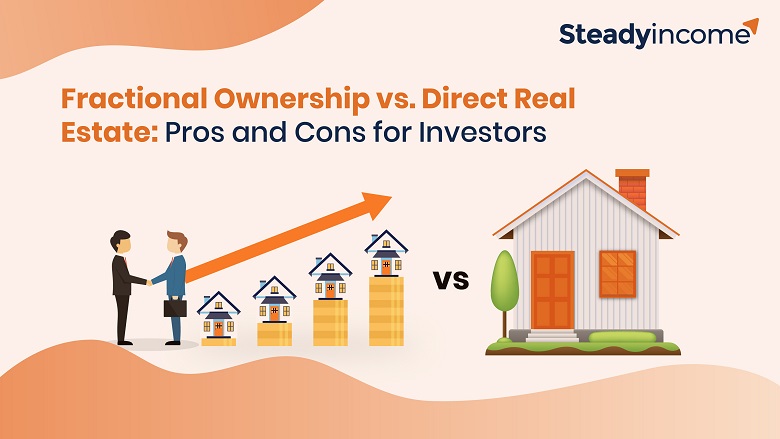Fractional Ownership vs. Direct Real Estate: Pros and Cons for Investors

Introduction
Investing in real estate has long been a favourite among Indian investors. But the traditional model of buying an entire property is no longer the only option. With innovation in the financial and property markets, fractional ownership has emerged as a viable alternative. But which one should you go for?
Let’s break down the key differences between fractional ownership and direct real estate, including the advantages and disadvantages.
Understanding Direct Real Estate Investment
Definition and Concept
Direct real estate investment means purchasing a property outright under your name or entity. You’re the sole owner and decision-maker.
How It Works
You scout, buy, maintain, rent (if desired), and eventually sell the property. Everything—from renovation to tenant selection—is in your hands.
Common Types of Direct Properties
-
- Residential apartments
- Villas
- Commercial shops
- Land parcels
What is Fractional Ownership in Real Estate?
Basic Explanation
Fractional ownership allows investors to jointly invest in property and own a share of a high-value real estate asset. Each investor holds a fraction (e.g., 10%) and receives proportional rental income and appreciation benefits.
How It Differs from REITs
Unlike REITs, where you own shares of a fund, fractional ownership gives you direct exposure to specific commercial or residential assets.
Role of Platforms like Steadyincome
Steadyincome enables investors to participate in pre-vetted, income-generating real estate opportunities, with low entry costs and professional management.
Pros of Direct Real Estate Investment
Full Control Over Property
You have the freedom to decide everything—from paint color to tenant screening.
Potential for Capital Appreciation
Over the long term, especially in urban areas, direct real estate can generate significant returns.
Rental Income and Tax Benefits
Owning a property means steady rental income and potential tax deductions on home loans, depreciation, and maintenance.
Cons of Direct Real Estate Investment
High Capital Requirement
Buying a decent property in metros requires lakhs or even crores of rupees, often through loans.
Illiquidity
Selling property takes time. Real estate is not a market where you can exit your investment quickly or easily.
Time and Management Demands
From property taxes to plumbing repairs, you're responsible for everything.
Pros of Fractional Ownership
Lower Investment Threshold
With as little as ₹10 lakh, you can invest in premium commercial assets that were previously unaffordable.
Diversification Opportunities
You can spread your investment across multiple properties in different cities or asset classes.
Professional Management and Maintenance
The property is managed by experts. You get the benefits without the headaches.
Cons of Fractional Ownership
Limited Control
You don’t get to choose tenants or dictate changes to the property.
Platform Dependency
You rely heavily on the platform’s transparency, reliability, and governance.
Exit Challenges
While platforms like Steadyincome offer secondary sales options, liquidity is still developing.
Which is better for you?
Risk Appetite
If you're risk-averse and want physical control, direct ownership may suit you. But if you're looking for low-risk diversification, fractional wins.
Investment Goals
Want long-term capital gains and full asset control? Go directly.
Need passive income and low-effort investing? Choose fractional.
Liquidity Needs
Direct ownership can tie up capital. Fractional investments offer better liquidity options through resale or buyback models.
How Steadyincome Helps Simplify Fractional Investing
Trusted Properties
Only carefully vetted, high-quality commercial properties are listed.
Transparent Operations
Regular updates, digital dashboards, and clear exit strategies make the process investor-friendly.
Hassle-Free Income Generation
With pre-leased properties, Steadyincome ensures timely income distribution and zero maintenance worries.
Conclusion
Both direct real estate and fractional ownership have their unique strengths and weaknesses. Your choice depends on how much control, capital, and involvement you're looking for. For modern investors seeking diversification, steady returns, and low effort, fractional ownership, especially through trusted platforms like Steadyincome, is a game-changer investment platform.

